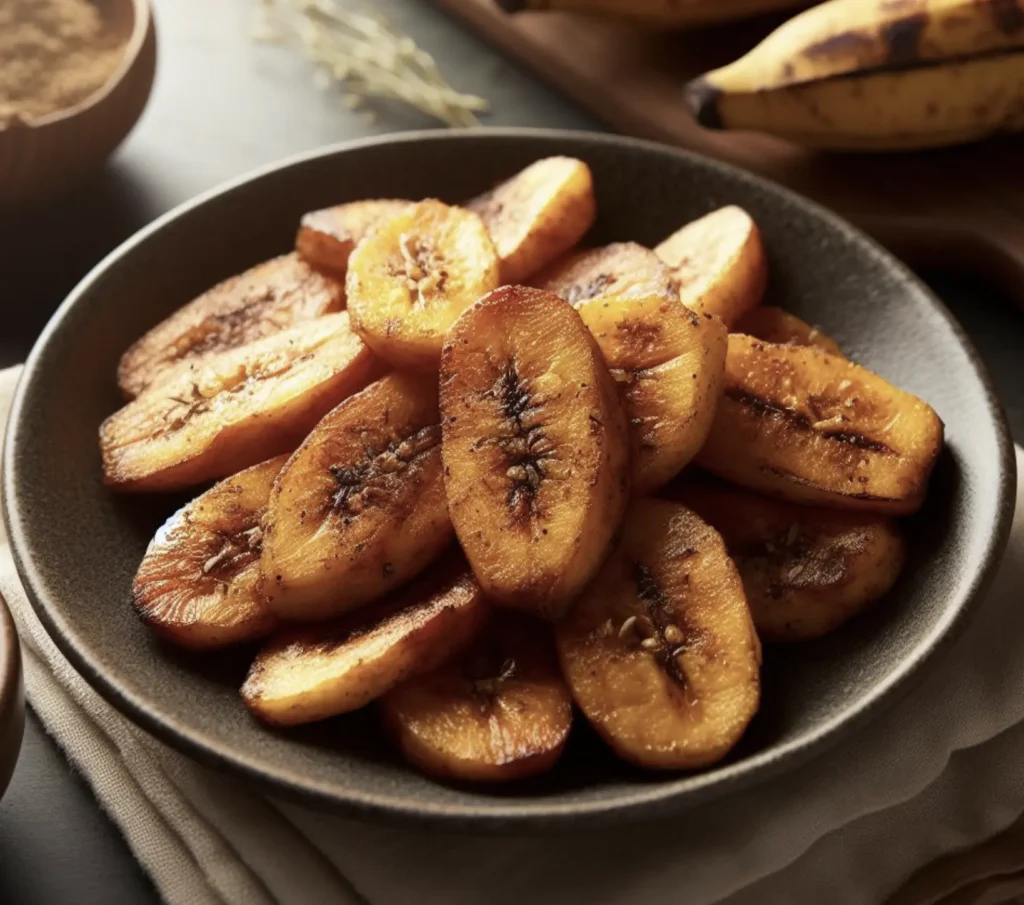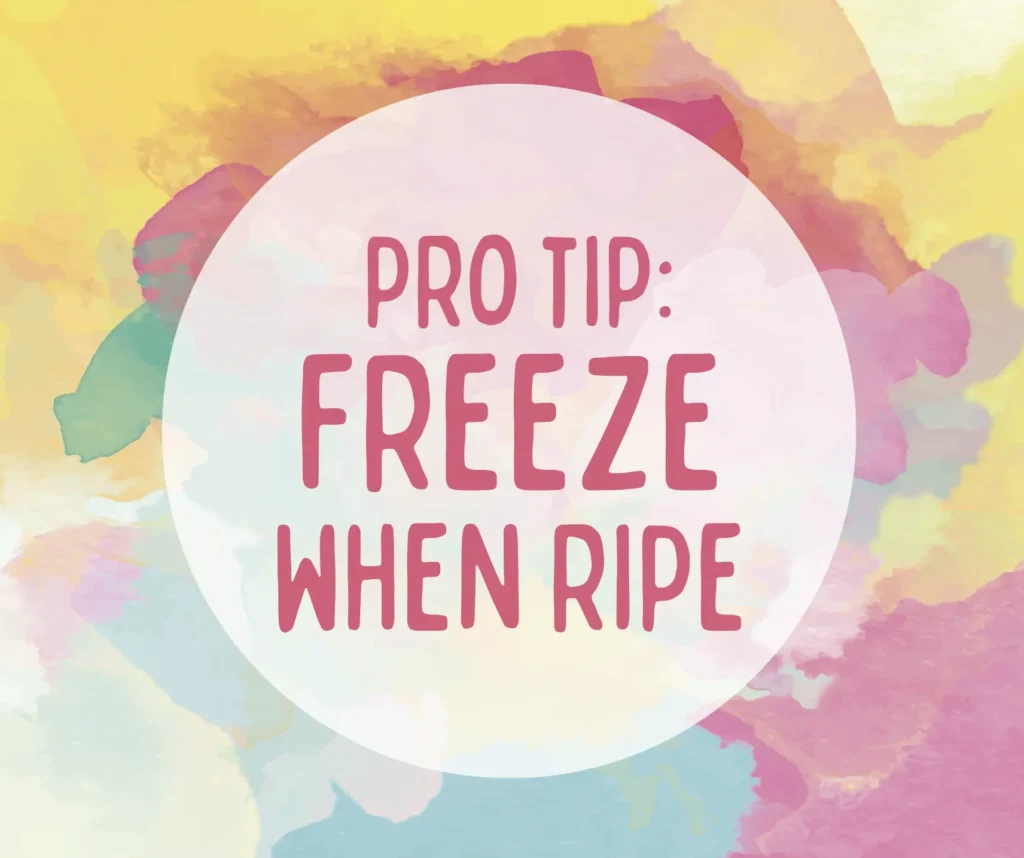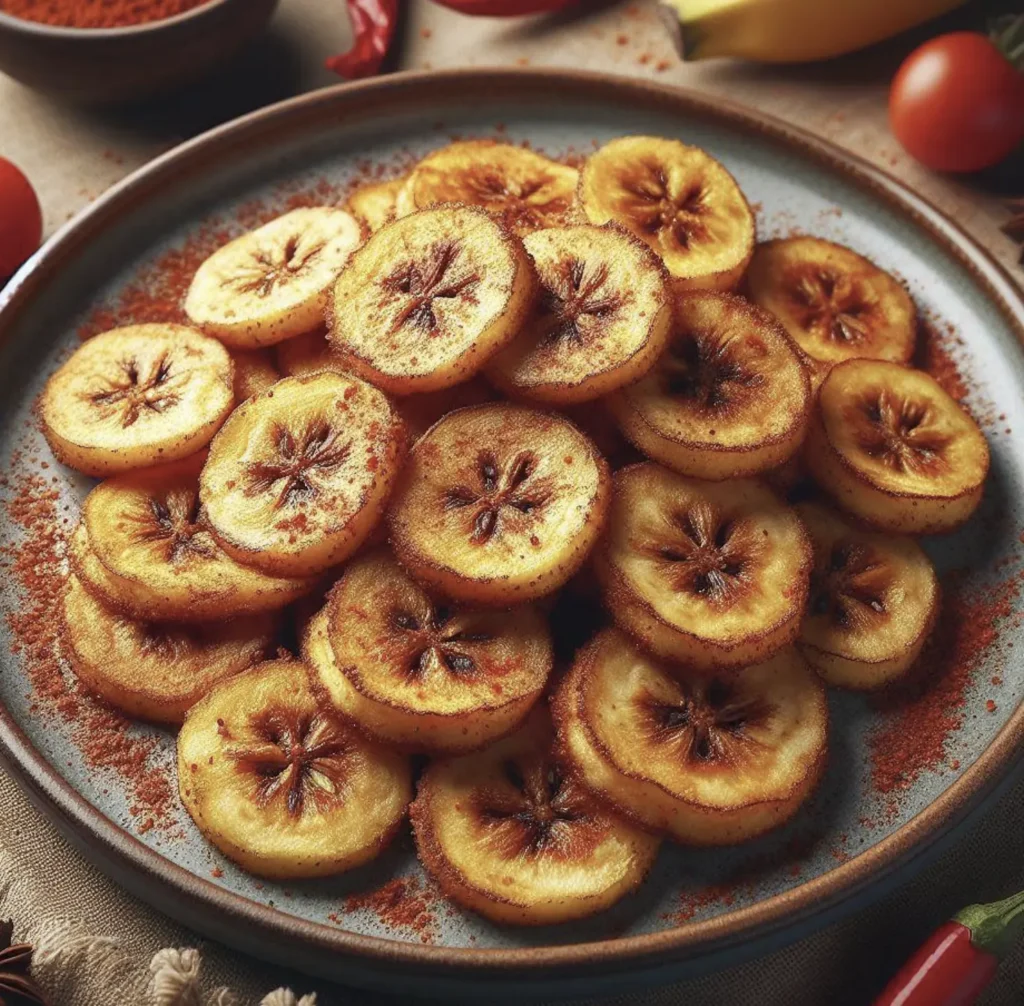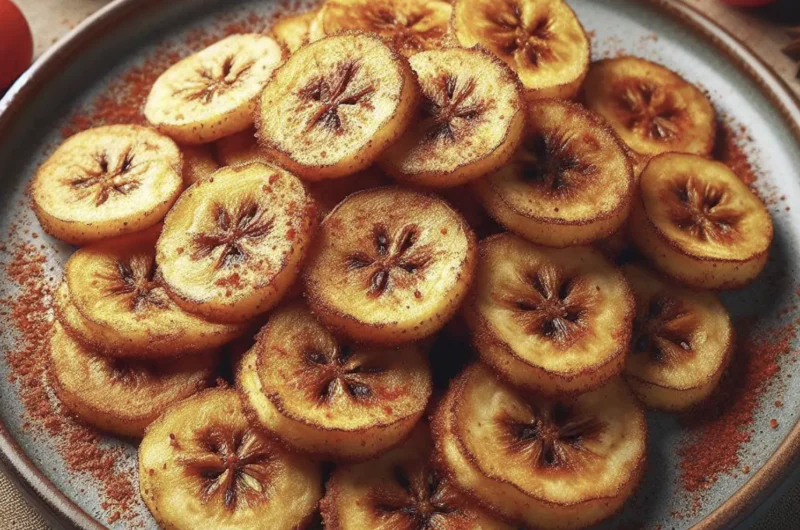Can You Freeze Plantains For a Fried Plantain Recipe?
Ever find yourself facing a mountain of plantains and wondering, “Can you freeze plantains?” If you’re like me, you betcha! In today’s post, we’re spilling the beans—or should I say, peeling the plantains—on how to keep these delicious fruits fresh for future use. 🍌
First off, let’s talk about plantains. These tropical fruits are part of the banana family, but they’re the hearty, starchy cousins of your regular bananas. They’re a staple food in many parts of the world, like South America, Central America, and even some regions of Southeast Asia. They come in different stages of ripeness: green plantains, yellow plantains, and black plantains, each with its unique culinary uses. And guess what? They all freeze like champs!
Why Would You Want to Freeze Plantains?
You may find yourself with a bunch of ripe plantains and not enough time or recipes to use them. Or perhaps you’re planning to make a lot of plantains in the future. In either case, freezing plantains is a great way to save time and make sure you always have this versatile fruit on hand.
Before Freezing: Room Temperature Matters
Before diving into the cold world of frozen plantains, remember this: Always start with plantains at room temperature. If your plantains have been basking in direct sunlight or hiding in a brown paper bag to speed up the ripening process, make sure to bring them back to room temperature. This small step makes a big difference and helps prevent freezer burn.
The Freezing Process: A Step-by-Step Guide
Here’s a quick step-by-step guide to get the best results:
- Preparation: Grab a sharp knife and cut both ends of the plantain. Peel it. You can choose to freeze whole plantains or cut them into thick slices for a quicker cooking time later on.
- Blanching: This is optional but good news for vitamin C fans! To preserve the color and vitamin C, you can blanch your slices in a bowl of warm water with a tablespoon of lemon juice.
- Prevent Freezer Burn: Wrap your plantains or slices in paper towels and then place them in a single layer on a baking sheet lined with parchment paper. The paper towels absorb any excess moisture.
- Packaging: Once they’re all wrapped up, move them to an airtight container or freezer-safe bags. Make sure to remove as much excess air as possible to avoid, you guessed it, freezer burn.
- Label and Store: Label your freezer bag with the date, so you remember how long your plantains have been chillin’ in the icy abyss.
- Ready for Action: The next time you need plantains, either as a great side dish or a main meal, you’re ready to roll!
The Best Way to Use Frozen Plantains
Using frozen plantains is a breeze. For savory dishes, you can defrost them in a bowl of warm water. Heat oil to high heat, then cook them till they’re golden brown. For sweet plantains, you can pop them straight into hot oil or an air fryer, seasoning them as you wish. Just be sure they are patted dry with paper towels to absorb as much of the moisture as possible. Frying wet food not only produces soggy results, but can be dangerous with hot oil splashing up from the moisture.
Whichever method you choose, cooking bananas (another name for plantains) from their frozen state may require a little bit more cooking time. But, hey, that just means your kitchen will smell amazing for a little bit longer! 😄
Where to Store Plantains: Best Place and Methods
If you’re still in the planning stages and haven’t frozen your plantains yet, keep unripe plantains in a cool, dark place away from direct sunlight. Ripe yellow or black plantains should be stored in the fridge to slow down the ripening process. But the best place for a long-term stay? Definitely the freezer.
Say Goodbye to Wastefulness!
Look, wasting food is never a good idea, especially when you’ve got a treasure like plantains on your hands. They’re good for your heart health and contribute to weight management, thanks to their starchy texture. Plus, they’re a source of vitamin C, which we all could use a little more of. So, if you’ve overstocked and can’t get through them quickly enough, freezing plantains is a fabulous solution.
The Freezer is Your Friend, But Don’t Forget to Label!
Freezer-safe bags are your go-to when it comes to stashing those slices or whole plantains. Just make sure to squeeze out any excess air before sealing. No one likes a freezer-burned plantain, am I right? Keep it neat by labeling those bags with the date and type of fruit inside—green, yellow, or black plantains. It’ll help any family member identify what’s what in that frozen jungle.
From Frozen to Fabulous!
Now that you know the answer to: can you freeze plantains, how do you bring your frozen plantains back to life? For those of you who fancy savory dishes, heat oil over high heat and fry them up until they reach a golden brown perfection. If you’re in the mood for a sweet treat, consider pairing them with a dollop of sour cream or even a scoop of ice cream. Yum! 😋
Experiment and Enjoy
The best part of this whole can you freeze plantains venture is that you get to experiment with different cooking methods. You can pan-fry, bake, or toss them in the air fryer. I’ve even heard that plantain chips are a crowd-pleaser. Just slice them up, coat them in a little bit of olive oil and salt, and pop them into the air fryer. Voila, a tasty snack or a great side dish is served!
Versatility is Key
Plantains are one of those foods that adapt well to your culinary imagination. From salty plantain chips to sweet plantains that rival sweet potatoes, the sky’s the limit. You can even make plantain bread or use them in main meals alongside a protein. They’re as versatile as a Swiss army knife but way tastier.

Think Outside the Freezer
And remember, while freezing plantains is a brilliant way to extend their life, it’s not the only thing you can do. Instead of asking can you freeze plantains, some folks ask how do I season my plantains properly? Some people like to peel their plantains and then soak them in salted water before cooking. Others prefer to wrap them in plastic wrap or place them in a brown paper bag to speed up or slow down the ripening process. You’ve got options, people!
Pro Tips from the Plantain Pros
We’ve covered the basics, but let’s sprinkle in some pro tips for good measure. For the best results, try to freeze plantains that are at their peak ripeness. The plantains won’t ripen properly after defrosting, therefore ruining your chances of cooking anything delicious with them.

What About Plantain Munchies for the Kiddos?
Plantains are not just an adult food; they can be an incredible snack for the little ones too. How about some plantain chips, air-fried to golden brown perfection? They have less sugar compared to regular bananas, and kids usually gobble them up without a second thought. So, you’re sneaking in some nutrition while satisfying their snack cravings. Score one for Team Parent!
Ready for Some Plantain Fun Facts?
Did you know that plantains originated from Southeast Asia before making their way to Africa, the Caribbean, and Latin America? Yep, this truly international fruit has been a mainstay in various parts of the world. They’re a prime example of how food can connect us all. And speaking of connections, plantains are a great way to introduce family members to the flavors of different cultures. Family time just got a little more exotic, didn’t it?
Pair It Like a Pro
Don’t underestimate the pairing power of plantains. They go brilliantly with meats, other veggies, and even wines for those special occasions. Whether you’re serving them as a tasty snack or as a great, savory side dish, they have a unique ability to elevate a main meal into a full-on culinary experience.
Savor the Savings
When you master the art of freezing plantains, you’ll notice how much you save. Since plantains can be bought in bulk when they’re in season or on sale, freezing them ensures you have a constant supply at hand, without breaking the bank. It’s a win-win, my friends!
Don’t Forget Your Health
Besides their deliciousness, plantains offer numerous health benefits. They’re packed with complex carbohydrates, fiber, and essential nutrients like vitamin C. They’re good for your heart health, great for weight management, and a terrific addition to any balanced diet.
| Nutrient | Fresh Plantains | Frozen Plantains |
|---|---|---|
| Calories | 122 kcal | 118 kcal |
| Carbohydrates | 31.9 g | 30.1 g |
| Dietary Fiber | 2.3 g | 2.1 g |
| Sugars | 14.8 g | 13.9 g |
| Protein | 1.3 g | 1.2 g |
| Fat | 0.3 g | 0.3 g |
| Vitamin C | 18.4 mg | 16.5 mg |
| Vitamin A | 1127 IU | 1014 IU |
| Potassium | 499 mg | 475 mg |
Don’t Let the Ripening Scare You!
Okay, real talk. Plantains go through several stages of ripeness, from green to yellow to black. Each stage offers a different flavor profile and texture. Green plantains are starchy and work well in savory dishes, while black plantains are sweeter and can even replace dessert. The point is, don’t fret if your fresh plantains aren’t at the “perfect” stage of ripeness when you’re ready to freeze them. They’ll still deliver on taste!
Save Time, Cook Later
One of the best ways to streamline your kitchen activities is to pre-cut your plantains and have them ready to cook later. Just peel them using a sharp knife, slice them into thick slices or long pieces resembling French fries, and voila! You can freeze these in a single layer on a baking sheet lined with parchment paper. Once frozen, transfer them to freezer bags, and you’re all set for future meals.
The Seasoning Secret
Before freezing your raw plantains, consider adding a tablespoon of lemon juice. Not only will it keep them from turning brown, but it will also add a subtle flavor that’ll shine through when you cook them. A small step with big impact!
The Plantain Cheat Sheet
Let’s summarize your options based on plantain color:
- Green Plantains: Best for savory dishes and frying.
- Yellow Plantains: Versatile, can swing either sweet or savory.
- Black Plantains: Best for sweet dishes and desserts.
The Versatility Doesn’t Stop
If you thought plantains were only about frying and baking, think again! You can boil them, too. Blanched plantains in salted water make for a quick and easy main meal or side dish. And with the starchy texture, they blend well with soups and stews, especially when you’re craving some comfort food.
Say No to Freezer Burn
Remember, the key to avoiding freezer burn is to remove as much excess air from the airtight container or freezer bag as possible. This ensures that your plantains stay delectable and ready to cook whenever the mood strikes. No more impromptu runs to the local grocery store!
Get the Whole Family Involved
Look, cooking should be a fun, family affair, and what better way to get the kiddos excited about mealtime than by letting them in on the plantain action? Whether it’s peeling the plantains, lining them up on the baking sheet, or even smashing them for some mouth-watering fried plantain slices, there’s a task for every family member. Teamwork makes the dream work, after all!
Let’s Get Regional 🌍
Plantains aren’t just a one-country wonder. They are a staple food in many parts of the world, from South America to Central America, to even Puerto Rico. So why not turn dinner into a geography lesson? One night you could be having Puerto Rican tostones and the next, South American plantain empanadas. It’s a delicious, educational journey!
More than Just a Snack
Sure, plantains make a great snack, but let’s not pigeonhole them. These versatile fruits can be the star of the main meal. Ever tried plantain lasagna? It’s a delectable, unique twist that will have everyone asking for seconds. So go ahead, think big and aim for the dinner table, not just the snack tray.
Quick Fixes for the Unprepared
Ran out of freezer-safe bags? Not a problem! Airtight containers will do the trick. But remember to layer them with paper towels to absorb any moisture, which can help avoid freezer burn. Similarly, no parchment paper for your baking sheet? Aluminum foil can serve as a quick replacement. Just make sure to grease it with a little olive oil to prevent sticking.
Health Watch: Take Care of that Heart
You might not realize it, but plantains offer a hearty dose of fiber and complex carbohydrates, making them good for your heart health. As if you needed more reasons to make them a part of your regular diet, right?
A Little Innovation Goes a Long Way
Ever considered stuffing your plantains? Cut a slit in the plantain and stuff it with cheese or meat, then bake until everything’s warm and melty. It’s an exciting variation that turns a simple plantain into an instant main meal.
Close the Chapter, But Keep the Book Open
This concludes our ultimate, step-by-step guide to freezing plantains, from choosing the best place to store them away from direct sunlight, to different ways to enjoy this delicious fruit. It’s a journey from room temperature to your freezer and then to your plate, offering a myriad of culinary possibilities.
Whether you’re new to plantains or have made them a few times before, the good news is that you now have all the tricks up your sleeve to make the most of this remarkable fruit. Until next time, may your kitchen be your playground and your meals be forever tasty!
FAQS
How do you store plantains in the freezer?
- Peel: Start by peeling the plantains. This step is key because the peel is tough to remove once frozen.
- Slice or Keep Whole?: You can freeze them whole or in slices, depending on your future cooking plans.
- Flash Freeze: If you’re going for slices, lay them on a baking sheet lined with parchment paper and flash freeze. This prevents them from sticking together.
- Storage: Transfer the frozen plantains into airtight freezer bags. Don’t forget to label them with the date!
- Freeze: Pop them in the freezer. They’ll keep well for about 3 months.
What happens when you freeze plantains?
- Texture Changes: Freezing will change the texture. They become a bit softer after thawing.
- Flavor Intact: Good news – the flavor doesn’t change much!
- Versatility: They’re perfect for cooking directly from frozen, especially for dishes like stews or fried plantains.
How do you store fried plantains?
- Cool First: Let them cool to room temperature. No one wants soggy plantains from condensation!
- Airtight Container: Place them in an airtight container. Separate layers with parchment paper.
- Refrigerate or Freeze: They can be refrigerated for a few days or frozen for up to a month.
- Reheating Tip: Reheat in an oven or air fryer to get back some of that crispy goodness.
Can I cut and freeze plantains?
Absolutely! Cutting them before freezing is a great time-saver. Just remember to flash freeze the slices first. This way, you won’t end up with a giant plantain ice block!
Can I fry plantains from frozen?
Yes, you can!
- Direct to Pan: No need to thaw; just adjust your cooking time a bit longer.
- Watch the Heat: Medium heat works best to cook them evenly without burning.
- Patience is Key: Let them cook a bit longer than usual to ensure they’re cooked through.
African Fried spicy Plantain Recipe
Course: SnacksCuisine: SouthernDifficulty: Easy4
servings10
minutes10
minutesThis recipe provides a mildly spicy twist to traditional African fried plantains. The cayenne pepper adds a bit of heat, making it a flavorful addition to any meal.
Ingredients
3 ripe plantains (yellow with a few black spots)
1 cup vegetable oil for frying
Salt to taste
1/4 teaspoon cayenne pepper
Directions
- Peel the Plantains: Begin by cutting off both ends of each plantain. Make a shallow slit along the length of the plantain, then peel off the skin.
- Cut the Plantains: Slice the peeled plantains diagonally into 1/2-inch thick pieces.
- Season the Plantains: Place the sliced plantains in a bowl and sprinkle salt and cayenne pepper evenly over them. Toss to coat.
- Prepare for Frying: In a frying pan, heat the vegetable oil over medium-high heat until it reaches about 350°F (175°C). You can test the heat by dropping a small slice of plantain into the oil; it should sizzle immediately.
- Fry the Plantains: Carefully place the seasoned plantain slices in the hot oil. Fry them in batches to avoid overcrowding the pan.
- Flip to Cook Evenly: Fry each side of the plantain slices until they are golden brown, typically taking 2 to 4 minutes per side.
- Remove and Drain: Once fried, use a slotted spoon to remove the plantains from the oil. Place them on a plate lined with paper towels to absorb excess oil.
- Final Seasoning: If desired, you can sprinkle a little more salt and cayenne pepper over the fried plantains for added flavor.
- Serve: The plantains are now ready to be served. They can be enjoyed as a snack on their own or as a side dish with other meals.
Notes
- Add garlic powder, ginger, or red chili flakes for extra flavor and kick.
Craving more delicious recipes? Try these: Cake Batter Flavored Birthday Cake

